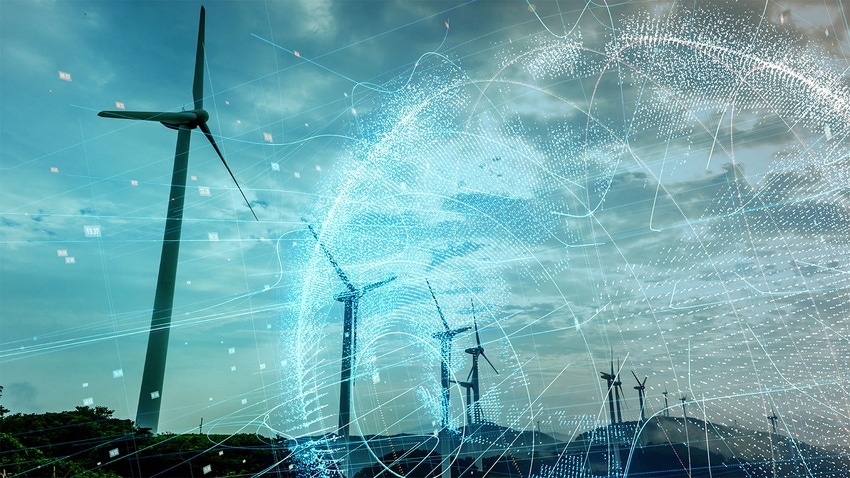Microgrids Deliver Resiliency, Security and Savings
IoT technology enables organizations to integrate utility grids and campus grids into a cost-effective energy system.
January 16, 2020

The term microgrid suggests thinking small, but the big picture for these IoT-based energy technologies is how they could revolutionize the distribution of electrical energy around the world.
Microgrids—often also referred to as smart grids—are essentially subsets of the larger electrical utility grids, designed to give organizations greater control over their energy resources and to make better use of utility-provided energy in conjunction with locally produced power.
In a published report—The U.S. Department of Energy’s Microgrid Initiative—the DoE defines a microgrid as “a group of interconnected loads and distributed energy resources within clearly defined electrical boundaries that acts as a single controllable entity with respect to the grid.”
The definition continues with a key feature that achieves one of the primary goals of microgrid implementation: “A microgrid can connect and disconnect from the grid to enable it to operate in both grid-connected or island-mode.’’
Islanding provides the mechanism for microgrid owners to realize improved resiliency when the utility grid may not provide adequate—or any—electrical power.
“The main reason [for microgrid implementations] in the U.S.—which is the world’s leading market for microgrids that are connected to the grid—is . . . unreliability,” noted Peter Asmus, who tracks emerging energy distribution networks in his role as a research director for Navigant Research.
Of course, resiliency also means that an organization can produce its own power when needed.
“The biggest key is just in the area of resiliency, and that [microgrids] can provide the opportunity to island from the grid,” noted Justin Brant, a senior associate with the Southwest Energy Efficiency Project (SWEEP) a nonprofit clean energy advocacy group. “When the grid may be down, you can still provide basic services.”
The Genesis of Microgrids
Microgrids were developed largely in response to our changing climate. Disasters on both U.S. coasts—hurricanes and massive storms in the east and wildfires in the West—emphasized the need for more resilient power source.
“The hot spots for microgrids are the East Coast and California,” said Asmus, “mainly because of resiliency but also because those are high-cost regions.”
SWEEP’s Brant also credits meteorological conditions for the growing awareness about the benefits of microgrids: “There’s a lot of interest in the area, especially if we think about adapting to the impacts of climate change.” Brant cited New York University as an example; during Hurricane Sandy, the university managed to provide power to its facilities while most of New York City—and a wide swath of the metropolitan area—was left in the dark.
Hospitals, Universities Lead Microgrid Adoption
While hospitals and other disaster recovery facilities are logical candidates for IoT microgrids, universities have also been at the forefront of microgrid deployments. While these organizations have different functions, their common denominator is self-contained campus locales, which makes a microgrid a viable alternative. Prisons also fall into that category.
But interest is not confined to institutional settings, as businesses have started to investigate microgrids as well, particularly businesses that rely on a steady stream of electrical power. According to Asmus, they are “the ones who see what it costs when the grid goes down and they’re not selling their product–they actually have a quantified cost for that.”
Military installations are another type of facility that may require uninterrupted power. Smart Power Infrastructure Demonstration for Energy Reliability and Security—or SPIDERS—is a government program with the goal of improving security and energy efficiency at military bases. Along these lines, Asmus noted that “A lot of military bases historically would have separate diesel generators for each building so they would all be operating sort of independently burning more fuel than necessary.” A microgrid that integrated those resources could improve a base’s fuel consumption efficiency and resilience.
Components of a Microgrid
As the DoE definition states, the first requisite for a microgrid installation is an IoT-based infrastructure that can link external and local resources and provide overall control. Those resources are the external utility power grid and the devices that can produce electrical power residing on the organization’s premises.
Another requirement is a mechanism that allows the microgrid to connect/disconnect to/from the larger utility grid as needed. The microgrid and the utility grid are linked by a “point of common coupling” that maintains voltage at a constant level as provided by the utility until there is a problem on the utility’s grid that interrupts or otherwise affects service. In the case of an interruption, the response would be to disconnect and use the local generating capacity to provide power to the organization. If the incident was more of a fluctuation in utility power delivery, the microgrid would tap the on-site energy producers to even out the flow.
The on-site power resource may be any type of electrical generation apparatus, including conventional diesel- or gas-powered generators, although the trend is toward cleaner energy typically provided by solar or wind generation.
The microgrid’s infrastructure is a textbook IoT network; it’s a local network that uses a wired or wireless link to integrate the utility energy feed, local generating devices and consuming components. The two-way nature of the energy flow, with the microgrids site able to accept and rout utility power but also able to send excess locally produced energy back to the utility, requires specialized software to manage all the likely scenarios that involve buying and selling electrical energy.
“It’s very different from the sort of software that a utility would use to control the overall electrical grid because they’re usually not worried about controlling the loads themselves, they’re just trying to balance generation with consumption,” Brandt noted.
Most of the heavyweights in IoT-base energy systems such as Schneider Electric can offer microgrid components, but there are also smaller suppliers, often based in Silicon Valley, that provide microgrid products. The price of components as well as the long-term viability of the supplying companies are likely to be key considerations for new microgrid deployers.
“A lot of companies might not be necessarily energy experts,” noted Asmus, “so it’s–‘Where do I begin, who do I trust?’–and there are so many different vendors out there.”
Installing a microgrid is clearly a major project, but it doesn’t necessarily mean an organization will have to purchase all new components. In many campus settings, some of the components of a potential microgrid are already in place, such as generating facilities or a management network. According to Asmus, “most microgrids are not greenfield projects—today most of them are retrofits.”
Microgrid implementers also have to parse their current energy usage and determine which parts of their facilities represent critical loads where power must be maintained under all circumstances. That’s because on-site power generation may be limited and unable to replace all the electricity normally drawn from the utility.
Benefits of a Microgrid
Beyond the primary benefits of resiliency under stressful conditions and greater security given islanding, microgrids also deliver other value.
With on-site power generation part of the picture, an organization can reduce their reliance on utility power and cut costs. In some cases, a microgrid’s local resource may produce excess power that can be sold back to the utility, even further reducing the organization’s energy costs. A microgrid may also help maintain use of utility power at a lower level to avoid peak usage charges.
With a network in place and overall management of components, organizations often find that they are better equipped to manage their energy consumption, which can further reduce costs.
Microgrids and Utilities
Given that most of the benefits of microgrids result in cost savings for the microgrid owners, it doesn’t seem like a situation that utilities would regard favorably. In addition to potentially losing money from reduced consumption, utilities also have to ensure that they can accommodate the bidirectional flow of energy as microgrids consume and create energy.
As a result, utilities were not enthusiastic when microgrids began to pop up. “Any time you have a customer generating their own power, the utility is losing sales,” observed Brandt.
But as interest in microgrids grow, utilities’ resistance to them has diminished, and some are trying to turn the potential of lost sales into a new profit stream. They’re doing so by becoming a willing partner and offering fee-based services to organizations for activities such as microgrid feasibility studies and designs.
Brandt notes that Xcel Energy is a case in point: “Here in Colorado, Xcel Energy recently filed a proposal for a resiliency pilot working with a number of communities in the area.”
A little farther west, Pacific Gas & Electric, Northern California’s principal energy purveyor, has proposed a system of microgrids to help segment its coverage and thus make it easier to manage power distribution and provide resilience in the face of destructive wildfires.
But for utilities to take a more active role in microgrid development, some adjustments to regulatory processes may be required to reduce the red tape and hasten deployments.
“A lot of the rules still date back to old monopolies’ way of doing business and the technologies is moving a lot faster than regulation,” Asmus said.
About the Author(s)
You May Also Like



.png?width=700&auto=webp&quality=80&disable=upscale)
.png?width=700&auto=webp&quality=80&disable=upscale)
.png?width=300&auto=webp&quality=80&disable=upscale)
.png?width=300&auto=webp&quality=80&disable=upscale)
.png?width=300&auto=webp&quality=80&disable=upscale)
